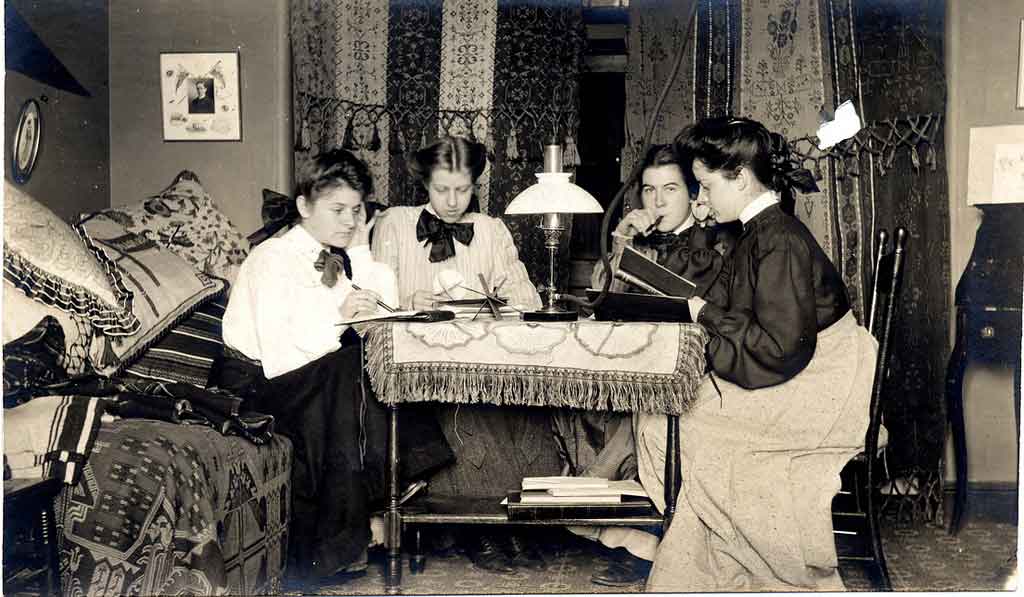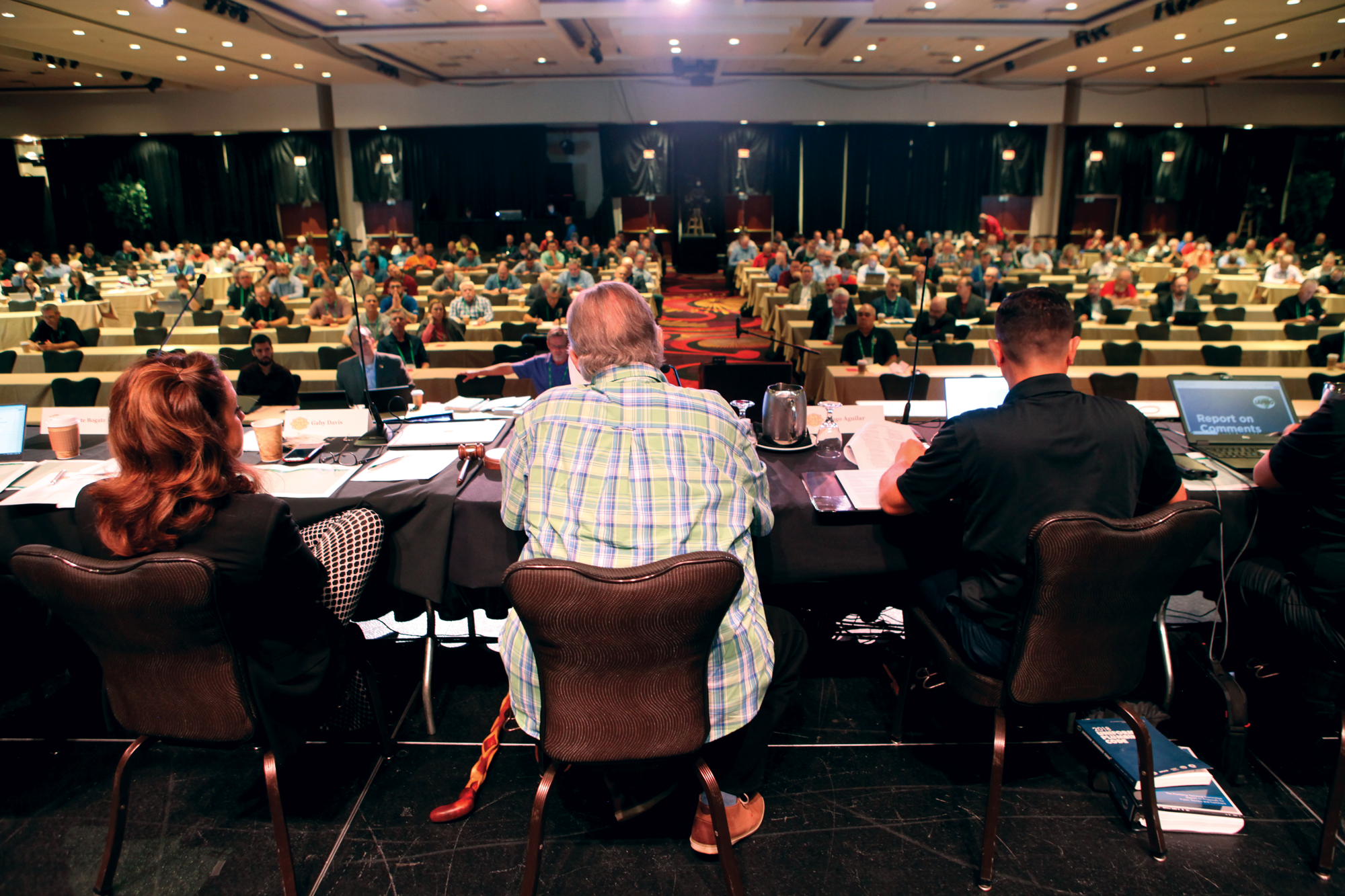Leers Weinzapfel Associates: Complete Project Prospectus 2021
Harvard Capital Project Vitals

This content is accessible to paid subscribers. To view it please enter your password below or send mike@standardsmichigan.com a request for subscription details.
Instant coffee is a staple in many people’s lives. Whenever you need a quick pick me up without having to go through the struggle of making an entire cup of coffee from scratch, instant coffee is there and ready. The earliest version of instant coffee was invented in the 18th century in Britain. It was called a “coffee compound” and was patented by the British government. In the United States, instant coffee was developed in 1853. It was tested during the Civil War in cake form, but instant coffee didn’t really take off until later. In 1901, Dr. Satori Kato was able to manufacture a stable powdered coffee, using a process he developed for making instant tea. In 1909, George Constant Louis Washington was able to get a patent and start the mass production of instant coffee, though the coffee was a novelty, it didn’t taste great.
Even though the coffee didn’t taste great, that didn’t stop it from being a staple among soldiers. The coffee got popular, and the mass production really blew up during World War 1. Caffeine provided the boost that soldiers needed while they were away at war and getting ready for battle. Instant coffee made getting that boost easy for soldiers and even after the war was over, still wanted the same instant coffee. Among some soldiers it was nicknamed, “cup of George.”
Instant coffee for the military was a large profitable market that G. Washington Coffee, Nescafe, and others had capitalized on. From 1939 to 1945, during World War 2, Nescafe and other brands of instant coffee supplied large quantities to the military. During one year of the war the U.S. military bought more than one million cases of Nescafe, which was their entire annual output of Nestle’s U.S. plant.
Nescafe became the most popular brand of instant coffee and was able to grow in popularity very quickly because of their new method of creating instant coffee. Around 1938, by co-drying coffee extract along with an equal amount of soluble carbohydrate they improved the taste. This made it better than the G. Washington Coffee because it was much more enjoyable.
There are two basic methods for producing instant coffee, freeze-drying and spray-drying. In freeze-drying, the coffee extract is frozen to about – 40°C and cut into granules. The frozen granules are then dried at low temperature and under vacuum. The quality of the aroma and flavor are protected by the very low temperature and gentle drying conditions. For spray-drying, in spray-drying the coffee extract is sprayed into a stream of hot air at the top of a tall cylindrical tower. As the droplets fall, they dry, becoming a fine powder by the time they reach the bottom. The powder may then be texturized into granules to facilitate dosage and dissolution. The quality of the aroma and flavor are preserved thanks to the very fast drying occurring during this process.
There are loads of instant coffee brands that people can choose from. Nescafé, Starbucks VIA, Maxwell House, Folgers, Robert Timms, International Roast, and Kava are a couple of popular brands, but there’s a bunch more at the grocery store. It’s all about finding which one you enjoy the most and then you’re able to have coffee whenever you need it.
Why did the Free City State Disappear?
Related:
— Elon Musk (@elonmusk) August 4, 2024
Free Access 2025 NFPA 13R | ICC Group R crosswalk

About 20 percent of education settlement real assets lie in student and temporary faculty housing; some of it located in “off-campus fire protection grid” owned by Mom-and-Pop rental housing owners or large corporate student housing aggregators. Both eschew residential sprinkler systems unless mandated by local building codes.
2025 Public Comment Transcript
Public input on the 2028 Edition will be received until June 4th.
Related:
Fire Protection Research Foundation: Stakeholder Perceptions of Home Fire Sprinklers
Fire hoses, on average, use more than 8 1/2 times the water that installed sprinklers do to contain a home fire. Our new video shows how little water fire sprinklers need to save lives. Download and share today. https://t.co/Xo9FWHldIT pic.twitter.com/l0jBLWAEMj
— Nonprofit HFSC (@HFSCorg) April 23, 2025
This content is accessible to paid subscribers. To view it please enter your password below or send mike@standardsmichigan.com a request for subscription details.
This content is accessible to paid subscribers. To view it please enter your password below or send mike@standardsmichigan.com a request for subscription details.
Today we slice horizontally through several vertical catalogs that interact, cross reference and are fairly dynamic in their best practice discovery and promulgation.
ASME A112.*| ASSE Series 5000 | AWWA| IAPMO | CISPI 301 Series | NSF Ann Arbor Michigan
Plumbing and sanitation systems in educational settlements – especially those with healthcare and research enterprises are intricately linked, ensuring clean water supply, waste removal, and public health. Plumbing systems deliver potable water to dormitories, academic buildings, dining halls, and recreational facilities through a network of pipes, pumps, and valves. (Kitchens). These systems source water from municipal supplies or campus wells, often treated to meet safety standards (Backflow Prevention). Hot water heaters and pressure regulators maintain consistent supply for showers, sinks, and laboratories.
Sanitation systems, conversely, manage wastewater and sewage. They collect used water from toilets, sinks, and showers, channeling it through drainage pipes to campus treatment facilities or municipal sewer systems. Advanced campuses may employ on-site wastewater treatment plants, using processes like sedimentation and biological treatment to reduce environmental impact. Regular maintenance, including pipe cleaning and septic tank pumping, prevents blockages and contamination.
The interaction requires precise coordination. Plumbing systems must avoid cross-contamination with sanitation lines, using backflow preventers and proper pipe insulation.
Sanitation systems rely on plumbing’s water flow to transport waste efficiently. On large campuses, high demand during peak hours challenges both systems, necessitating robust infrastructure. Sustainable practices, like low-flow fixtures and greywater recycling, enhance efficiency, reduce costs, and align with campus environmental goals, ensuring a hygienic and functional environment.
Join us today at 11 AM when we sort through the settled science and unsettled standards of care. Use the login credentials at the upper right of our home page.
Related:
“We see that the Pacific theater presents significantly longer distances than any theater we operated in the recent past, and that’s going to present some pretty significant fuel/logistic supply chain risk,” said DAD Roberto Guerrero.https://t.co/ncdcEwP6d3
— Air Force Energy (@AFEnergy) May 15, 2023
How many pounds of stuffing can a C-5 carry? Asking for a friend… #HappyThanksgiving @TeamCharleston @Travis60AMW pic.twitter.com/kKkBIEC5py
— Air Force Energy (@AFEnergy) November 23, 2021
The University has a strong reputation for research and innovation in many fields related to the prevention of backflow incidents:
Viterbi School of Engineering has a dedicated Environmental Engineering program that focuses on water quality and management. This program has faculty members who are experts in water treatment and distribution systems, including backflow prevention technologies. The school also offers research opportunities for graduate students to work on water-related projects, including those related to backflow prevention.
Keck School of Medicine has a Department of Preventive Medicine that conducts research on environmental health, including waterborne diseases and contamination. This department has published research on the prevention of waterborne disease outbreaks and the importance of backflow prevention measures in protecting public health.
The USC Environmental Health and Safety department is responsible for overseeing the safety and compliance of the university’s facilities, including its water systems. EH&S works closely with the university’s Facilities Management Services to ensure that backflow prevention measures are in place and maintained.
The USC Foundation drafts definitions and specifications covering cross-connection control and the assemblies required for the prevention of backflow.

IAPMO develops codes and standards in collaboration with industry experts, government officials, and other stakeholders. These codes and standards are designed to promote public health, safety, and welfare by establishing minimum requirements for the design, installation, and maintenance of plumbing and mechanical systems.
FREE ACCESS: 2021 Uniform Plumbing Code
While the IAPMO catalog may be less well-known beyond its home waters the path through their periodic revision process is very transparent; one of the most transparent accredited standards developers in the land. We get to say that because there is no one else on earth that has been slicing horizontally through so many “domain silos” for so long. (We have practically created an original academic discipline).
For example:
The IAPMO ANSI-Accredited Development Process
2024 Uniform Plumbing Code Report on Proposals (1200 pages)
2022 Uniform Plumbind Code Report on Comments (1056 pages)
TENTATIVE – 2027 UPC/UMC CODE DEVELOPMENT TIMELINE
We maintain the IAPMO catalog on our periodic Water 200/Water 400 colloquia. See our CALENDAR for the next online meeting; open to everyone.
There were several barriers to the adoption of interior plumbing systems throughout history. Here are some of the key factors that contributed to the slow adoption of indoor plumbing:
Lack of technology: In the early days of plumbing, there was a lack of technological advancement, making it difficult to design and install effective plumbing systems. The development of new technologies such as water pumps, water heaters, and pipes made it easier to bring water into buildings and distribute it throughout the space.
High cost: Building indoor plumbing systems was a significant expense, and many people simply couldn’t afford it. Installing plumbing required digging trenches, installing pipes, and connecting to a reliable water source, all of which were expensive undertakings.
Health concerns: In the past, there were concerns about the safety and cleanliness of indoor plumbing systems. There was a fear that standing water in pipes could lead to the growth of bacteria and other harmful microorganisms, and that indoor plumbing could increase the risk of waterborne diseases.
Despite these barriers, the adoption of indoor plumbing systems slowly increased over time, as new technologies and innovations made it easier and more affordable to install plumbing in buildings. Today, indoor plumbing is considered an essential component of modern living, and is a standard feature in homes and buildings around the world.
Milestones:
New update alert! The 2022 update to the Trademark Assignment Dataset is now available online. Find 1.29 million trademark assignments, involving 2.28 million unique trademark properties issued by the USPTO between March 1952 and January 2023: https://t.co/njrDAbSpwB pic.twitter.com/GkAXrHoQ9T
— USPTO (@uspto) July 13, 2023
Standards Michigan Group, LLC
2723 South State Street | Suite 150
Ann Arbor, MI 48104 USA
888-746-3670
